Poznań 2022-08-31
Airplanes at the Agricultural Museum in Szreniawa.
National Museum of Agriculture and Food Industry in Szreniawa.
Geographic coordinates: 52.315N 16.797E.
The agri-aviation exposition.
The Museum in Szreniawa, next to Poznań, has the largest collection of aircraft that have been used in agriculture and forestry in Poland over the centuries. At the same time, this section is discussed and presented in detail.
The Agrolotnictwo exposition has the largest exhibits in the museum, but not the heaviest. Nine original aircraft are on display in the museum. Most of them were produced and operated in Poland, Europe, Africa, South and North America. There are planes and one helicopter in the open exhibition. All exhibits are in the original colors in which these planes were used in Poland.
PZL Mi-2 R SP-SCO.
The first flight of the Mil Mi-2 helicopter prototype took place on September 22, 1961. One of the first prototype versions of the Mi-2 was the agricultural version. It was probably the third prototype of the Mil Mi-2 helicopter. His trials were carried out in one of the kolkhozes near Moscow in 1962. The helicopter received an installation for dusting with fertilizers. In September 1962, the helicopter was demonstrated to the party and government authorities of the CCCP.
When it was decided to produce the Mi-2 helicopters in Poland at WSK PZL Świdnik, it was known that most of the helicopters built in Poland would go to CCCP. Many of them were to be produced in the agricultural version. Work in Poland began in 1965. Muscovites delivered to Poland a complete set of dusting equipment, i.e. work with loose chemicals. However, the works in Poland dragged on because the supplied equipment was underdeveloped and required modernization. In addition, it was necessary to develop an installation for spraying, i.e. working with liquids, from scratch, which is much more difficult to implement due to the specific design of the atomizers (sprinklers) and the system of pipes.
The dusting installation supplied with the CCCP was tested using a PZL Mi-2 helicopter, registration SP-PSC No. H-152. Relatively quickly, small chemical tanks from CCCP were replaced with Polish pear-shaped laminate tanks with a capacity of 600 liters each. There was a separate dusting installation for each tank, located above the tank. It consisted of an electric motor and a fan, the rotation of which induced chemicals into the air stream, on an injector principle. Further, the air and chemicals flows through the sleeve, which archs backwards and downwards under the helicopter. There he gets outside. The adjustment of such a system is negligible, the dusted area is narrow, and most importantly, it is unevenly covered. It was not possible to get all the chemicals out of the tank. During the work, the concentration of chemicals decreased. A completely new system had to be developed.
The first change was the use of spreaders located at the base of the chemical tanks. The spreaders are powered by electric motors. Much better coverage was achieved, but not yet satisfactory. The problem was the high speed of the helicopter in relation to agricultural machines and the air movement caused by the helicopter's rotor. It was decided to use specially shaped channels right behind the spreader. The channels are made of plastic. Thanks to this, they are relatively strong, but also light. Many weeks of tests led to the final selection of the shape of the outlet channels, which were adopted for serial production.
The Polish agricultural helicopter was flown on June 20, 1968. Production of the PZL Mi-2 R helicopters for dusting started in 1968. The first two helicopters were left at WSK PZL Świdnik. Others have already found their way to the CCCP.
The work on spraying fields with liquid substances was much more difficult. Tanks supplied with CCCP, with a capacity of 400 liters each, were used. In addition to them, there was an installation consisting of an electric pump, a network of pipes and 110 sprinklers. The sprinklers are arranged in two sets. The first set was placed right at the end of the fuselage, leading it to the left and right. There are 45 sprinklers on each side. As the area behind the hull was not covered, the second set was placed halfway down the tail boom below, placing another 20 sprinklers there. Installation was tricky. It required the use of several braces supporting the sprinkler pipes. It is much easier to install this type of installation on an airplane. In field conditions, it was not possible to replace the dusting installation with the spraying installation on helicopters.
Several corrections were made as a result of the tests carried out. First of all, the span of the main sprinkler set has been reduced. The idea was that the pilot did not see the tips of the spraying system during the flight and in a sharp bend he could easily catch the ground or treetops. The number of sprinklers has also been reduced to 60, spacing them slightly wider. The tanks were replaced with Polish ones, 600 liter, pear-shaped. Work continued on the design of the sprinklers to ensure that the atomization (fragmentation) of the liquid was as high as possible. Further years of use of the PZL Mi-2 R helicopters showed that many more chemicals are dusted than sprayed. It was initially a 1:10 (spray / dusting) ratio in the 70's, then 1: 5 in the 80's.
At the beginning of the 70s, further modifications were made to the spraying installation. The rear sprinkler set, the one under the tail boom, has been removed. A center section has been added to the main set. Installation has become simpler and easier to use. In 1975, production of sets was started: separate for dusting and separate for spraying, using the same chemical tanks and accessories.
In total, 350 PZL Mil Mi-2 R helicopters were produced in the agricultural variant. Most were sent to the CCCP.
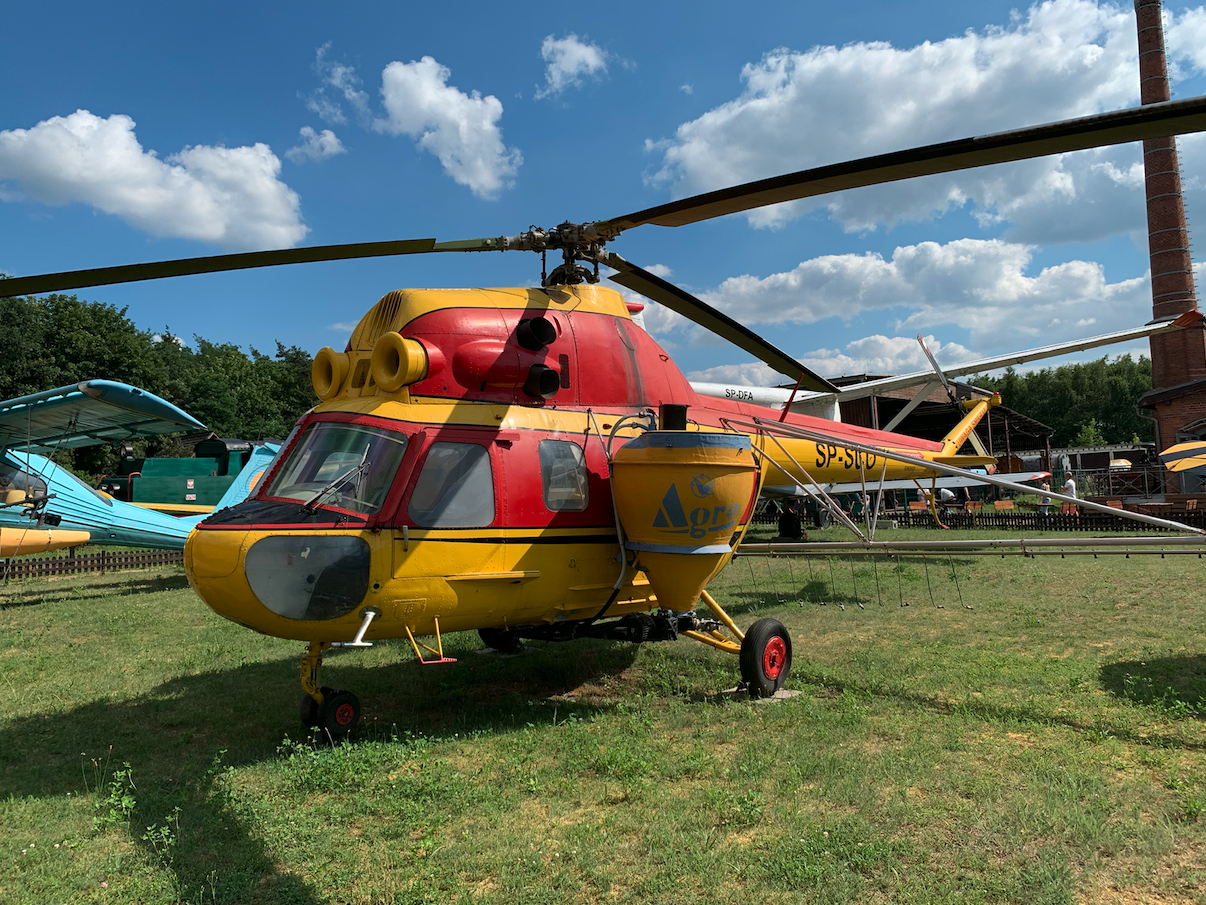
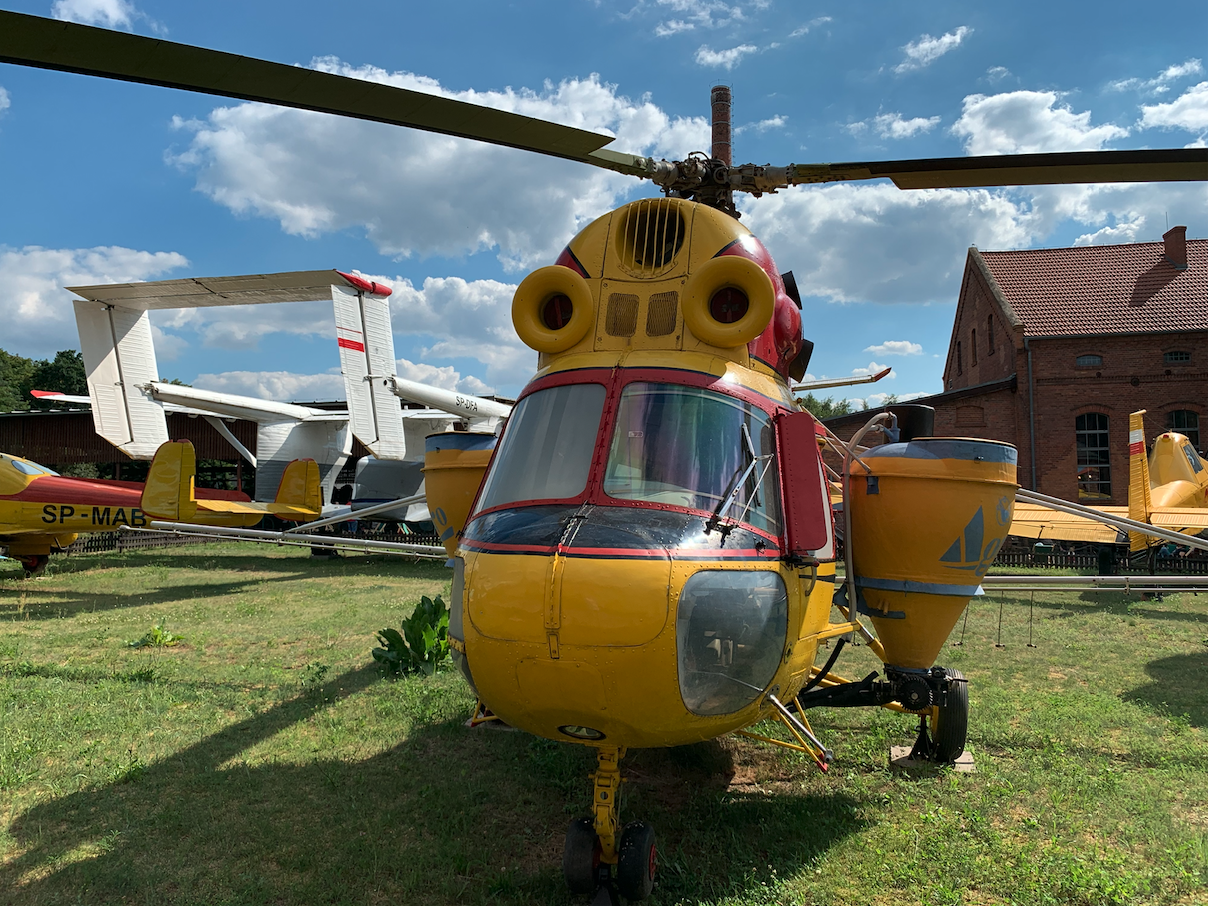
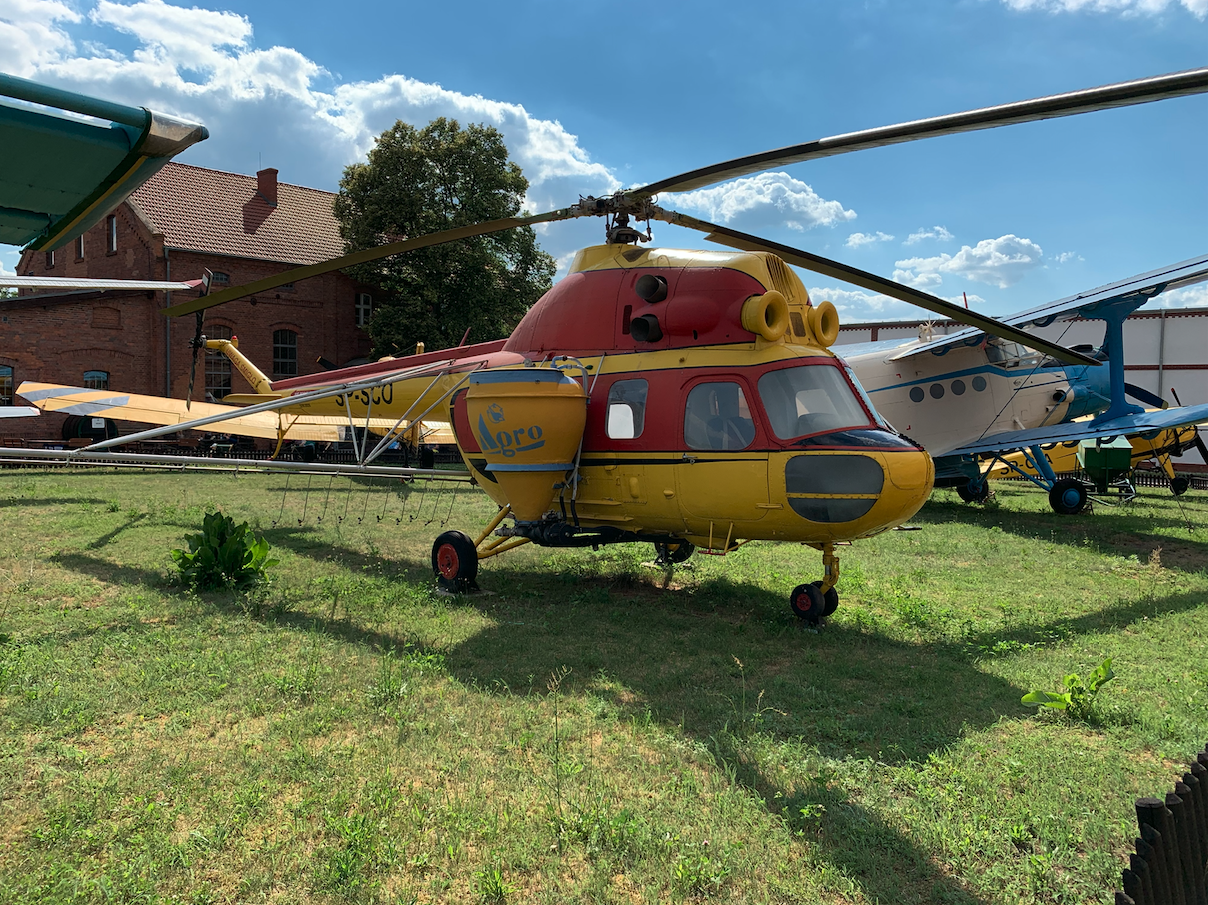
LET L-200 D Morawa SP-MAB.
The LET L-200 Morava is a Czechoslovakian aircraft designed for operational, liaison and sanitary tasks. Built in a twin engine configuration, a classic low wing, with a tail in the shape of the letter "H", all metal. As standard, it takes the pilot plus four people on board. The aircraft was designed and manufactured at the LET plant in Kunovice. The constructor was Eng. Ladislav Smrček.
Three prototypes were built. Due to the fact that the target engines were not ready, the plane was powered by weaker Walter Minor 6-III engines, with a power of 2 x 160 HP). The flight of the prototype took place on April 6, 1957. Serial production ran from 1957 to 1964. A total of 367 were built. All serial aircraft were powered by the target Walter M337 engines, with a capacity of 2 x 210 hp (2 x 154 kW).
About 50 planes were purchased for Poland. They were used in Sanitary Aviation and Aeroclubs.
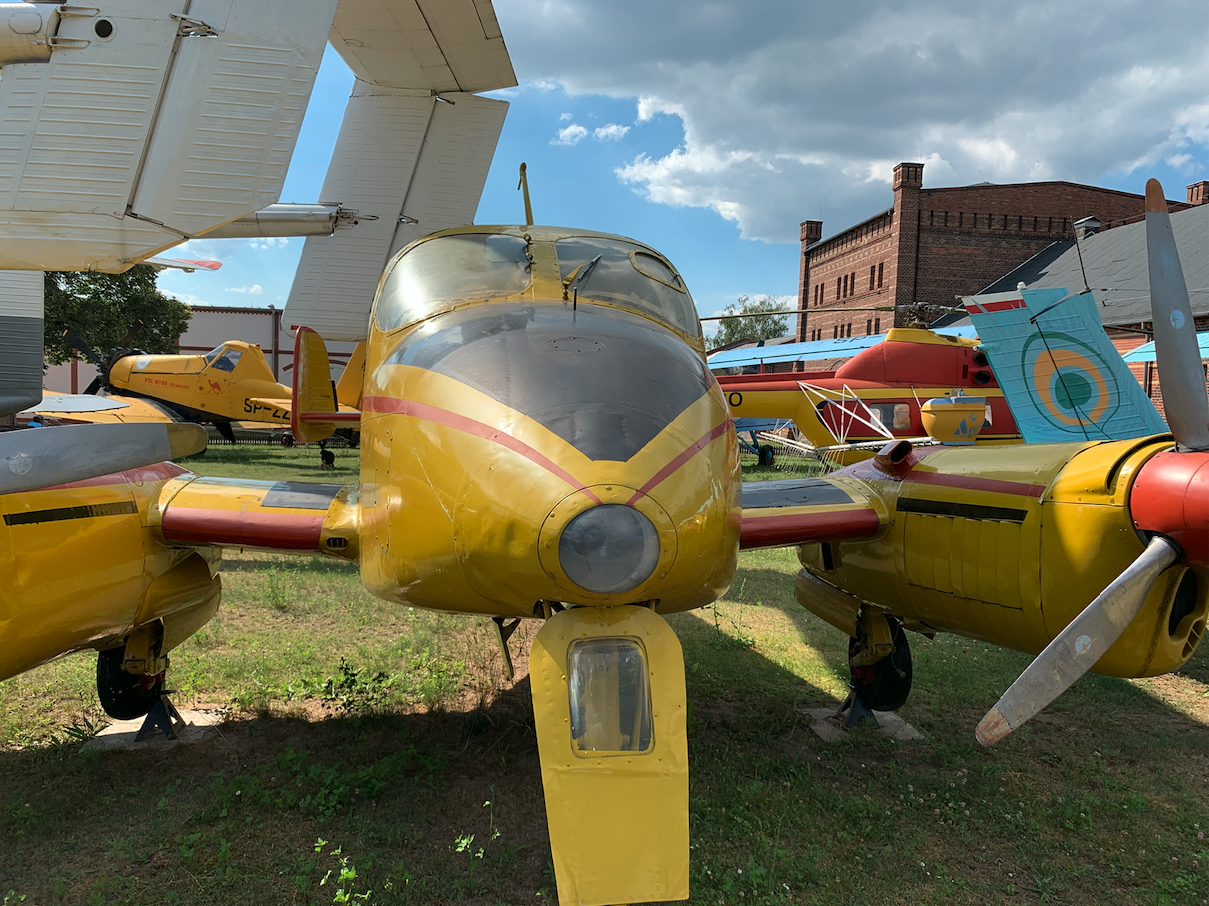
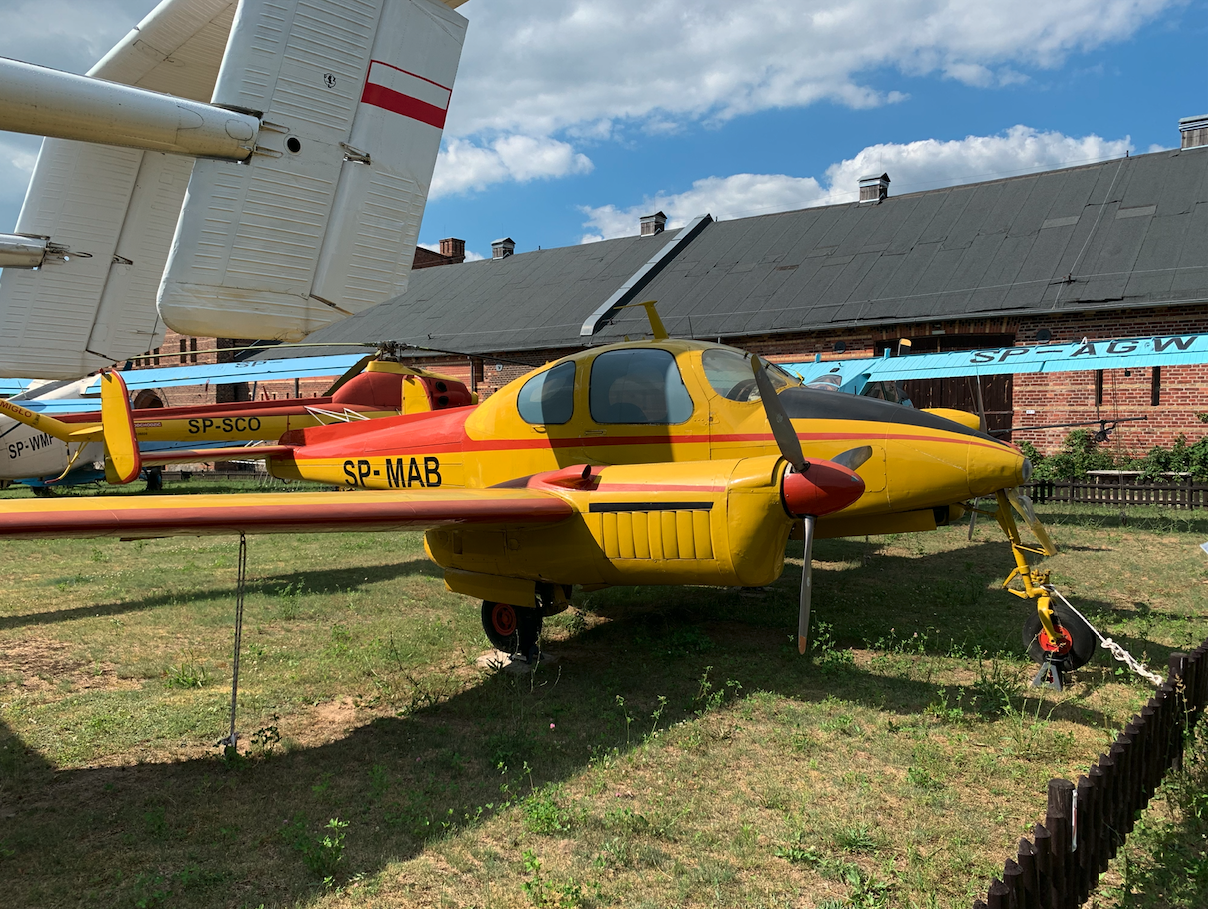
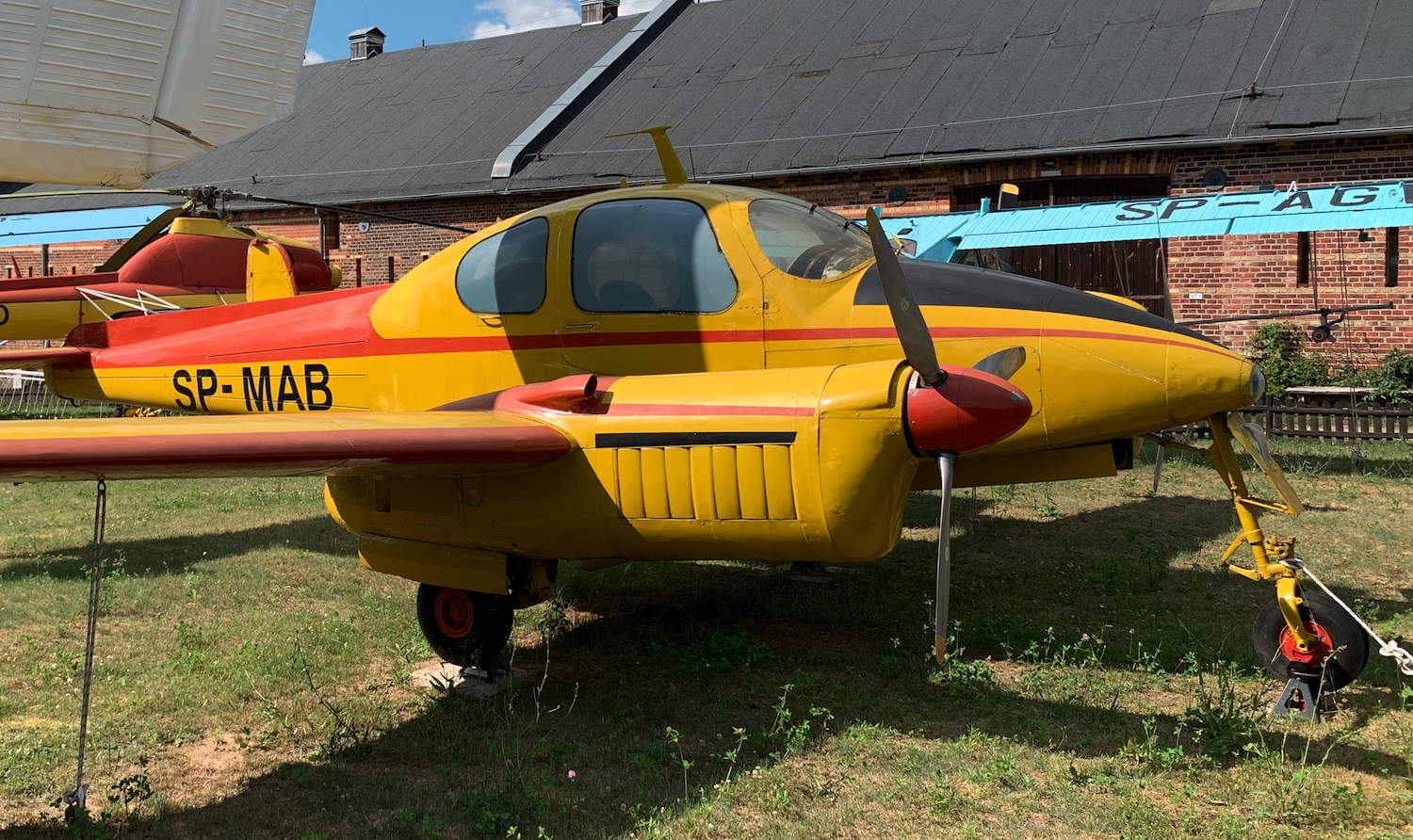
PZL CSS-13 SP-AHS.
In 1926, the team of engineer Nikalai Nikalaevich Polikarpov started working on the training plane. The machine received the designation U-2. The case was difficult. The engineers lacked experience and, above all, were ordered to use non-strategic materials such as wood, plywood and canvas. A powertrain was also allocated. A simple, weak, 5-cylinder radial engine, from the Szwecov office, designated M-11. Nevertheless, work on such a simple plane was very slow. The prototype was ready after about 12 months. On June 27, 1927, M. M. Gromow made the first flight. The plane turned out to be unsuccessful and was thoroughly rebuilt. The revised prototype was not ready for flight until 1928 and the first flight was made that year. The first flight was probably made on January 7, 1928, and the pilot was again M. M. Gromow.
The plane was sent to mass production, with the designation U-2. This designation lasted until 1944. Production was carried out at the plant No. 23 in Leningrad (now Snakt Petersburg). In total, 1,235 U-2s were produced between 1928 and 1940. He was unofficially named Kukurusnik by trained young pilots. In the code of the Allies, the plane was marked Mule, which is a good representation of its temperament in the air. During World War II, opponents referred to the aircraft as a sewing machine because of the noise it makes while flying. In Poland, after the launch of the CSS-13 production, the plane was called Pociak or Papaj. The machines were used in the Second World War and the Korean War. In 1944, the name of the aircraft was changed to Po-2, after the designer.
After the death of Nikalai Nikalaevich Polikarpov, his position was taken by G. I. Bakshayev. His team made a small modification to the structure of the aircraft. The machine received corrected ailerons. They have now become slotted and have had an increased surface area and a changed outline. Of course, their suspension system has changed. The elevator has a trimmer (balancing flap) controlled from the cabin. The fairings of the primitive shock absorbers of the chassis received new aerodynamic fairings. The engine starting system has been changed. Now compressed air was pumped into the cylinders from the cylinder. The cylinder was an airport equipment and was connected by a hose to a stub pipe on the left side of the fuselage just behind the engine. On-board instruments on the dashboard have improved. Integrated engine pressure and temperature indicator. An electric tachometer was installed instead of a mechanical one. The pressure sensor (Pitot tube) has been moved to the strut, closer to the lower lobe and on the longer boom. Several sight glasses were installed in the wings and fuselage. They simplified the inspection of the technical condition of the aircraft.
But the modernization made was not stunning, and the plane was still primitive. The greatest advantage of the machine has been retained; possibility of taking off from random landing sites. It is not true, according to some periodicals, that the plane could fly in all weather conditions. It was sensitive to strong gusts of wind, and taking off or landing in the rain was quite a feat. Due to the catastrophic low altitude, he made more turns (to avoid clouds) than he traveled kilometers. The range between the drag speed and the maximum speed was only 80 km / h. The maximum speed was 150 km / h downwind. Since 1970, helicopters have been flying twice as fast. It is also not true that the plane was easy to repair. Breaking one of the four structural beams of the fuselage caused the machine to be written off. The repair was unprofitable. It was cheaper to build a new machine.
The plane in the diving flight could not exceed the speed of 250 km / h, and the speed of 300 km / h caused the destruction of the plane. U-2 in a diving flight, losing 8 m / s, reached a speed of 195 km / h. During test flights, when the pilot had an oxygen system, he reached an altitude of 6,900 m. Since no such installation was installed on serial machines, the plane did not exceed an altitude of 3,000 m. The maximum speed at an altitude of 100 m was 150 km / h, but the higher it was the ceiling the more the speed dropped. At 6,900 meters, the speed of the plane was only 103 km / h. The maximum speed of climb in the tests was 3.23 m / s, and the plane with the load was only 0.5 m / s. It was very little. At the maximum altitude (6,900 m), the plane had a flight time of more than 35 minutes. It was no better in horizontal maneuvers. The machine at a speed of 122 km / h on an altitude of 1,000 m has a turning time in the horizontal plane was 16 seconds. The maximum range was about 400 km, and it was achieved after about 3 hours 30 minutes of flight.
The planes went primarily to the army and special units. U-2 / Po-2 accompanied the activities on the Eastern Front during World War II. But the features of the T-T required a special tactic of operation. First of all, they flew in combat only at night. A massive attack was also used due to the low load capacity of the weapons. However, the low speed was favorable to accuracy.
Po-2 planes also took part in the Korean War. Due to their small dimensions and non-metal construction, they gave poor radar echo. So they were harder to spot and shoot down. But they themselves were not able to inflict significant losses on the opponent.
From 1948, the Po-2 aircraft was produced in Poland as PZL CSS-13, and the sanitary version was designated S-13. You need to know that Poland was forced to mass-produce Po-2 planes so that Polish planes would not be produced; including the PZL S-1 training and liaison aircraft. Several CCS-13 airplanes have equipment for dusting forests and fields.
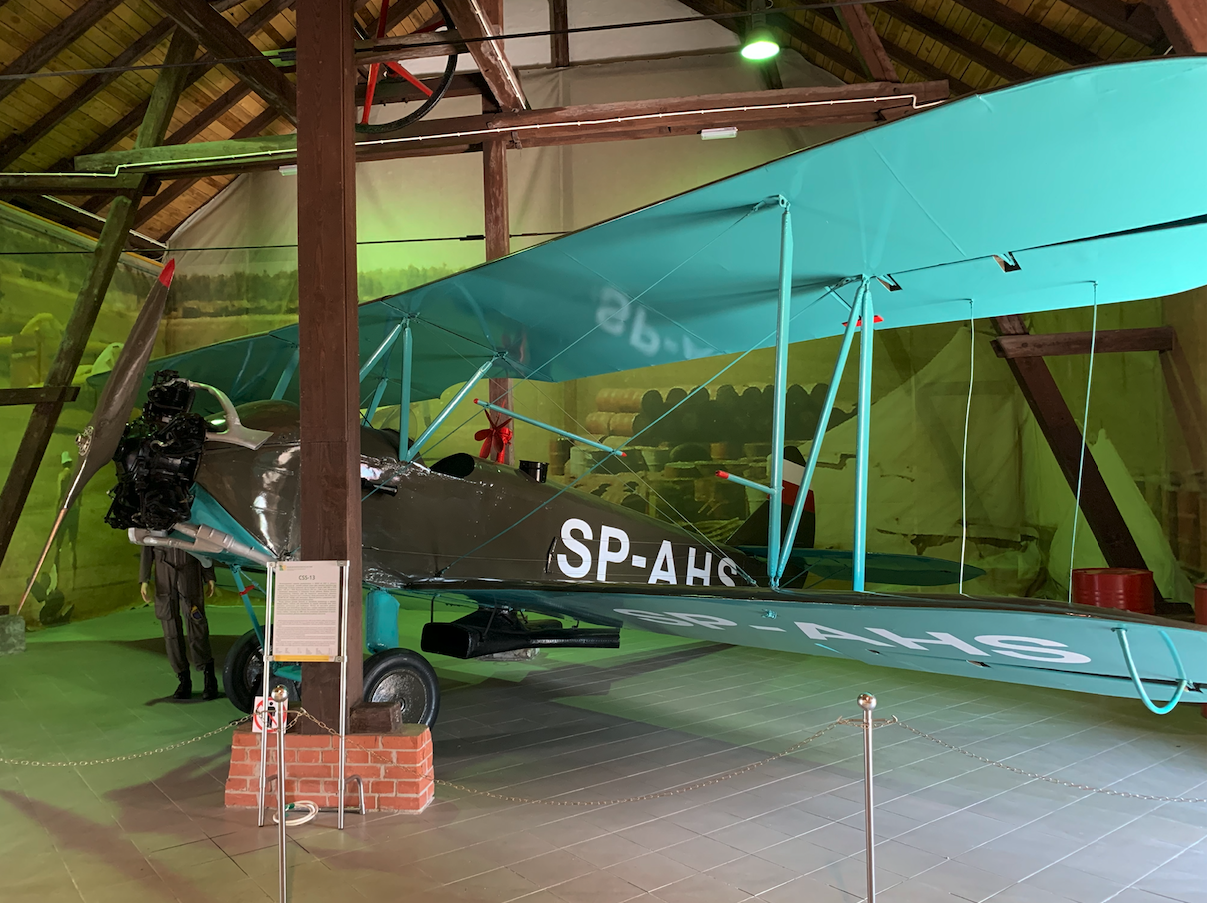


Written by Karol Placha Hetman
